The debate of wet vs dry cappuccino remains a topic of intrigue and preference among coffee aficionados and casual drinkers alike. This article delves into the heart of what sets these two variants of cappuccino coffee apart, focusing on the key elements that define their character: foam and milk. By exploring the subtle yet significant differences in taste, texture, nutritional content, and preparation methods, we aim to provide a comprehensive understanding of these beloved coffee styles. Whether you’re a seasoned barista or a curious coffee enthusiast, this exploration into wet and dry cappuccinos will enhance your appreciation and knowledge, helping you make an informed choice for your next coffee experience.
Feeling a bit lazy to read? Hit play and listen to the article below.
- Introduction & Key Differences
- https://app.mysoundwise.com/tracks/17007650388929702e.mp3
- The Wet Cappuccino
- https://app.mysoundwise.com/tracks/17007650730531445e.mp3
- The Dry Cappuccino
- https://app.mysoundwise.com/tracks/17007651021023796e.mp3
- Wet vs Dry: The Showdown
- https://app.mysoundwise.com/tracks/17007651356780046e.mp3
- The Essence of Cappuccino
- https://app.mysoundwise.com/tracks/17007651784173645e.mp3
- Barista Tips and Tricks
- https://app.mysoundwise.com/tracks/17007652115591501e.mp3
- Conclusion & FAQs
- https://app.mysoundwise.com/tracks/17007652435018081e.mp3
Dry vs Wet Cappuccino: Key Differences
- Milk and Foam Ratio: Wet cappuccinos have more steamed milk and less foam, creating a creamier texture. The dry version features a higher proportion of foam, resulting in a frothier texture.
- Flavor Profile: The wet version of this coffee drink is smoother and slightly sweeter, with the milk softening the espresso’s intensity. Dry cappuccinos offer a bolder espresso flavor due to less milk dilution.
- Caloric Content: Wet cappuccinos generally have fewer calories because of the lower foam content. Dry cappuccinos, with more milk foam, tend to be higher in calories.
- Temperature and Texture Contrast: The foam in dry cappuccinos keeps the drink hotter and provides a foamier texture, while wet cappuccinos are creamier due to more steamed milk.
- Caffeine Perception: Despite similar caffeine levels, wet cappuccinos may seem to have a milder caffeine kick, whereas the espresso flavor in dry cappuccinos can make the caffeine feel stronger.
The Wet Cappuccino
A wet cappuccino stands as an inviting alternative for those who find standard cappuccinos overly robust or lattes too creamy. This variant maintains the traditional structure of the classic coffee drink but modifies the milk-to-foam ratio, offering a distinctively smoother and gentler taste experience. It’s an excellent middle ground for coffee enthusiasts seeking a balance between the intense flavor of espresso and the rich creaminess of milk.
What Makes It “Wet”?
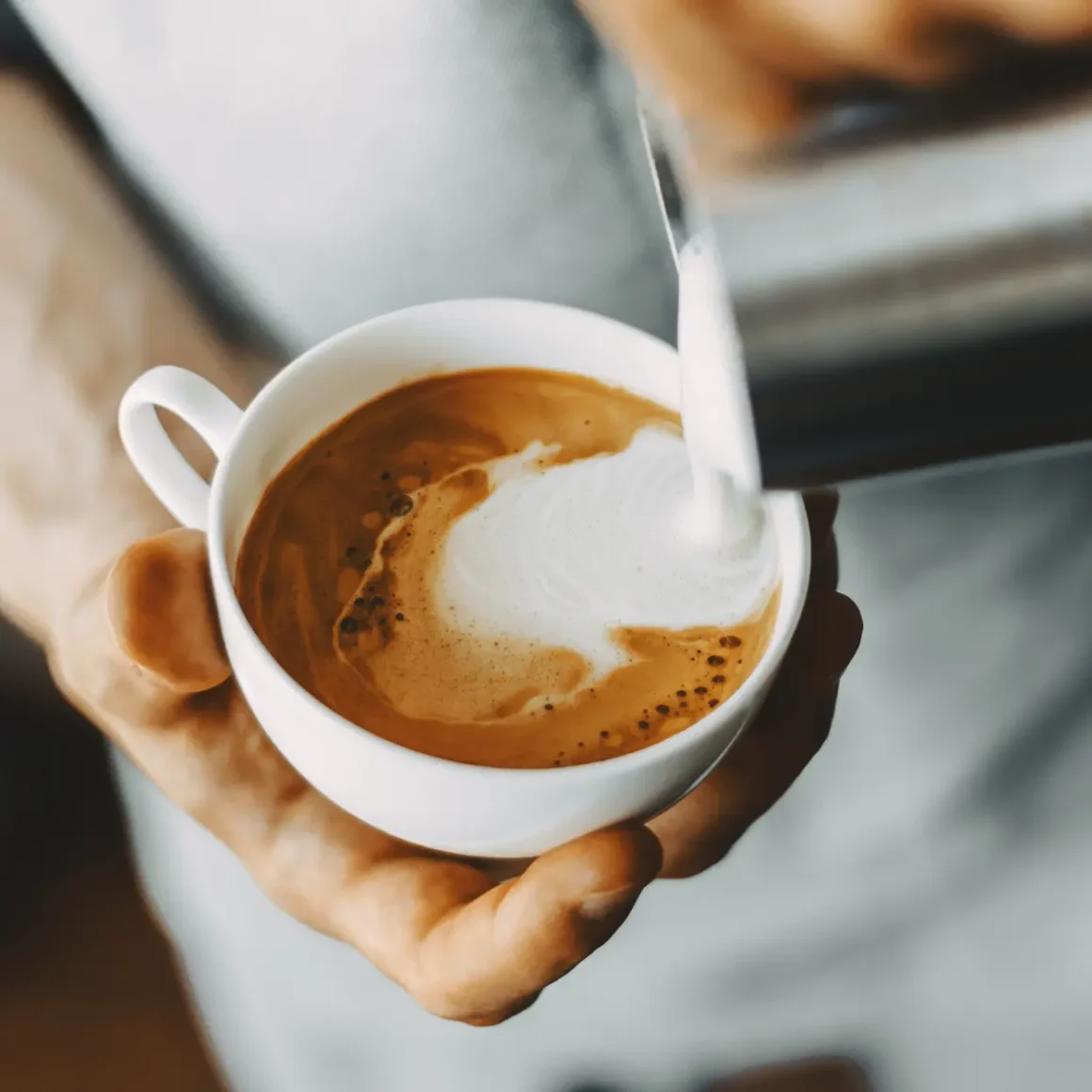
The defining characteristic of a wet cappuccino is its milk content and texture:
- Increased Steamed Milk: Unlike its dry counterpart, a wet cappuccino contains more steamed milk. This higher proportion of liquid milk, compared to foam, gives it a “wetter” texture. (1)
- Reduced Milk Foam: While the traditional version has a significant layer of foam, wet cappuccinos feature a thinner layer, shifting the focus to steamed milk.
- Texture and Flavor: The increased milk ratio not only softens the robustness of the espresso but also adds a creamy, mild, and slightly sweet taste profile, differentiating it from the more espresso-forward dry cappuccino.
In a nutshell, a wet cappuccino’s defining features are its higher steamed milk content and reduced foam layer, resulting in a creamier texture and a milder, sweetly nuanced espresso flavor.
How to Brew the Perfect Wet Cappuccino
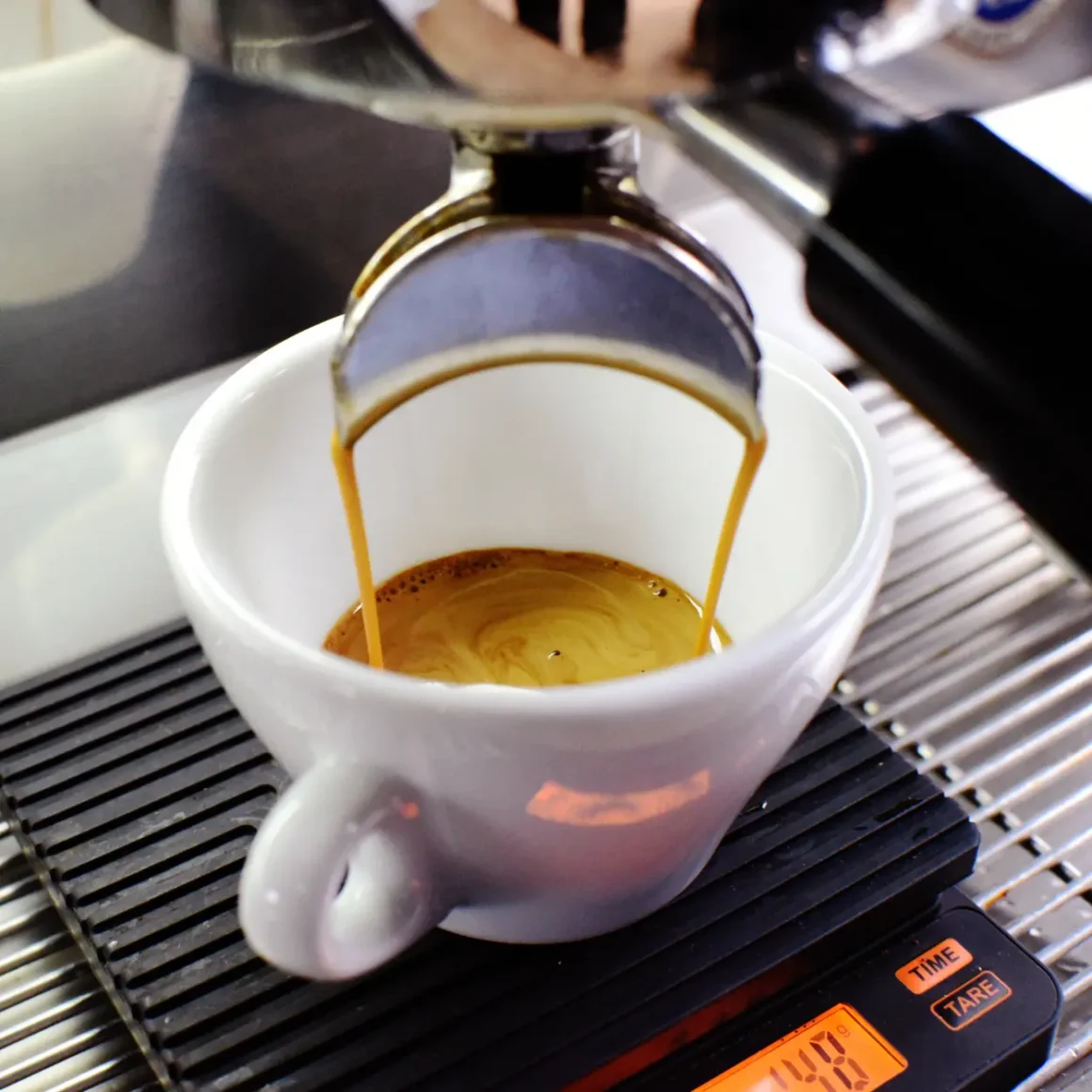
Brewing an exemplary wet cappuccino involves a few key steps and the right equipment:
- Equipment Needed: An espresso machine, burr coffee grinder, tamper, kitchen scale, and optionally, an espresso leveler/distribution tool.
- Ingredients: 14 grams of medium-dark roast coffee beans (18 grams for larger baskets), 1 teaspoon of cocoa powder, and 3/4 cup of cold milk (whole or 2% preferred).
- Brewing Espresso: Preheat the espresso machine, finely grind the coffee beans, and fill the filter basket. Tamp the grounds firmly, ensuring a 3-4 mm gap from the basket’s rim. Brew for 20 to 25 seconds to yield about 1 fluid ounce of espresso.
- Steaming the Milk: Switch to steam mode, fill a pitcher with cold milk, and steam until hot (~155°F), avoiding excessive foam.
- Combining the Drinks: Pour the steamed milk over the espresso, creating a desirable pattern with minimal foam. Serve immediately.
To sum up, crafting the perfect wet cappuccino involves careful attention to the espresso preparation, meticulous steaming of the milk, and the artful combination of these elements to create a harmonious and flavorful coffee experience.
Taste Profile and Variations

The wet cappuccino offers a unique taste profile and can be adapted to various preferences:
- Creamy and Mild Flavor: The dominant steamed milk imparts a creamy texture and a mild sweetness, muting the espresso’s bitterness.
- Super-Wet Cappuccino: For an even creamier variant, the “super-wet” cappuccino uses more steamed milk and almost no foam, resembling a latte.
- Customization: Flavored syrups, such as vanilla or caramel, can be added for a personalized touch. Cocoa or cinnamon can be sprinkled on top for an aromatic finish.
The wet cappuccino offers a delightful experience for those who enjoy the essence of espresso but prefer a smoother, less intense coffee drink. Whether served in a cozy café or brewed at home, it provides a comforting and indulgent escape for coffee lovers.
The Dry Cappuccino
The dry cappuccino offers a unique coffee experience, diverging from its wet counterpart with a distinct emphasis on milk foam over liquid milk. This beverage is a testament to the versatility of coffee and showcases how subtle changes in composition can lead to remarkably different flavor profiles and textures. Perfect for those who relish the boldness of espresso paired with the lightness of foam, the dry cappuccino is a delightful exploration of coffee artistry.
The Art of Dry Foam

Creating the perfect dry foam is an essential aspect of a dry cappuccino:
- High Foam Ratio: Dry cappuccinos are characterized by a high foam-to-milk ratio, typically around 75% foam to 25% milk.
- The texture of the Foam: The foam in a dry cappuccino is airy and light, offering a unique mouthfeel that sets it apart from other coffee drinks.
- Insulating Property: The thick layer of foam acts as an insulator, keeping the espresso hot and intensifying its flavor. (2)
- The Skill of Steaming: Achieving the ideal foam requires skillful milk steaming, where the milk is heated without making it overly liquid.
Mastering the art of dry foam is key to the distinct texture and warmth of a dry cappuccino, making it a favorite for those who enjoy a foam-forward coffee experience.
Crafting the Dry Cappuccino
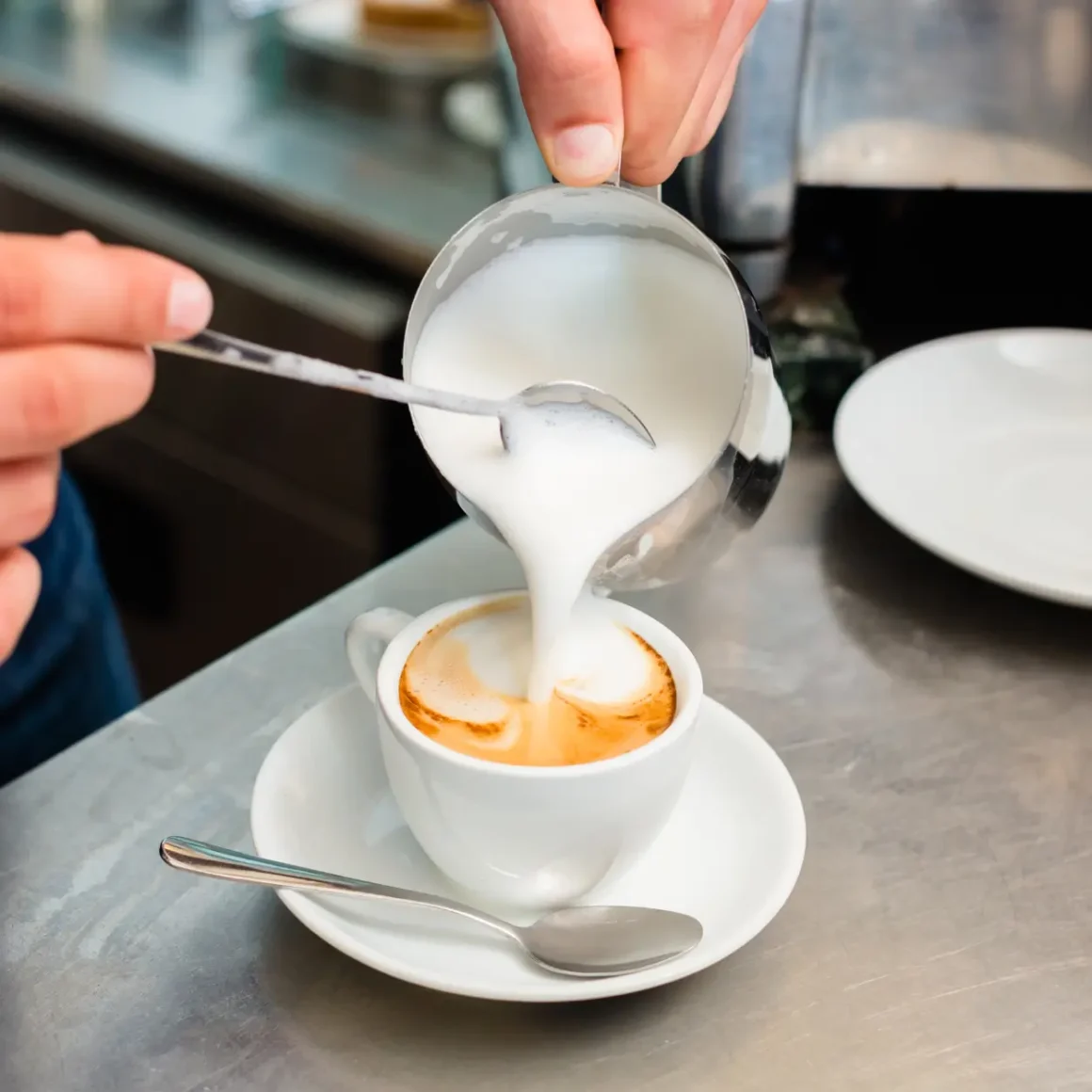
The process of making a dry cappuccino requires precision and understanding of coffee brewing techniques:
- Equipment and Ingredients: You’ll need an espresso machine, burr coffee grinder, tamper, kitchen scale, and optionally, an espresso leveler. The ingredients include 7 grams of medium-dark roast coffee beans, 1.5 oz. of filtered or spring water, and 2/4 cup of cold milk.
- Brewing the Espresso: Heat the espresso machine, grind the coffee beans finely, and fill the filter basket. Tamp the grounds and brew the espresso for 20 to 25 seconds, aiming for about 1 fluid ounce.
- Steaming the Milk: Switch the machine to steam mode, add cold milk to a pitcher, and steam while focusing on creating a rich, thick foam.
- Combining the Components: Pour a minimal amount of steamed milk over the espresso and then generously top it with the prepared foam.
Successfully crafting a dry cappuccino hinges on careful attention to each step, from grinding the beans to the final foam topping, ensuring a harmonious blend of bold espresso and rich foam.
Flavor Spectrum and Varieties

The dry cappuccino is not just a singular drink but a category with various iterations and a distinct flavor spectrum:
- Bold Espresso Flavor: As previously discussed, the reduced milk content in a dry cappuccino allows the espresso’s robust and bold flavors to shine through.
- Bone Dry Cappuccino: A variant of the dry cappuccino is the ‘bone dry cappuccino’, also known as extra dry cappuccino, which completely omits steamed milk, consisting solely of espresso and foam.
- Customization Options: Garnishes like chocolate shavings, cocoa powder, or cinnamon can be added to enhance the flavor and visual appeal of the drink.
Understanding what is a dry cappuccino and its variations like the bone dry cappuccino invites coffee enthusiasts into a world of rich flavors and textures. Whether enjoyed in a bustling café or crafted at home, the dry cappuccino stands as a testament to the art of coffee making, offering a deeply satisfying and indulgent experience.
Wet vs Dry: The Showdown

The world of this delightful coffee drink presents a fascinating dichotomy between its wet and dry variants. Understanding the differences in taste, texture, nutritional value, and other aspects of these two popular forms of cappuccino coffee can enhance both the appreciation and the art of making these beloved beverages.
Taste and Texture Comparison
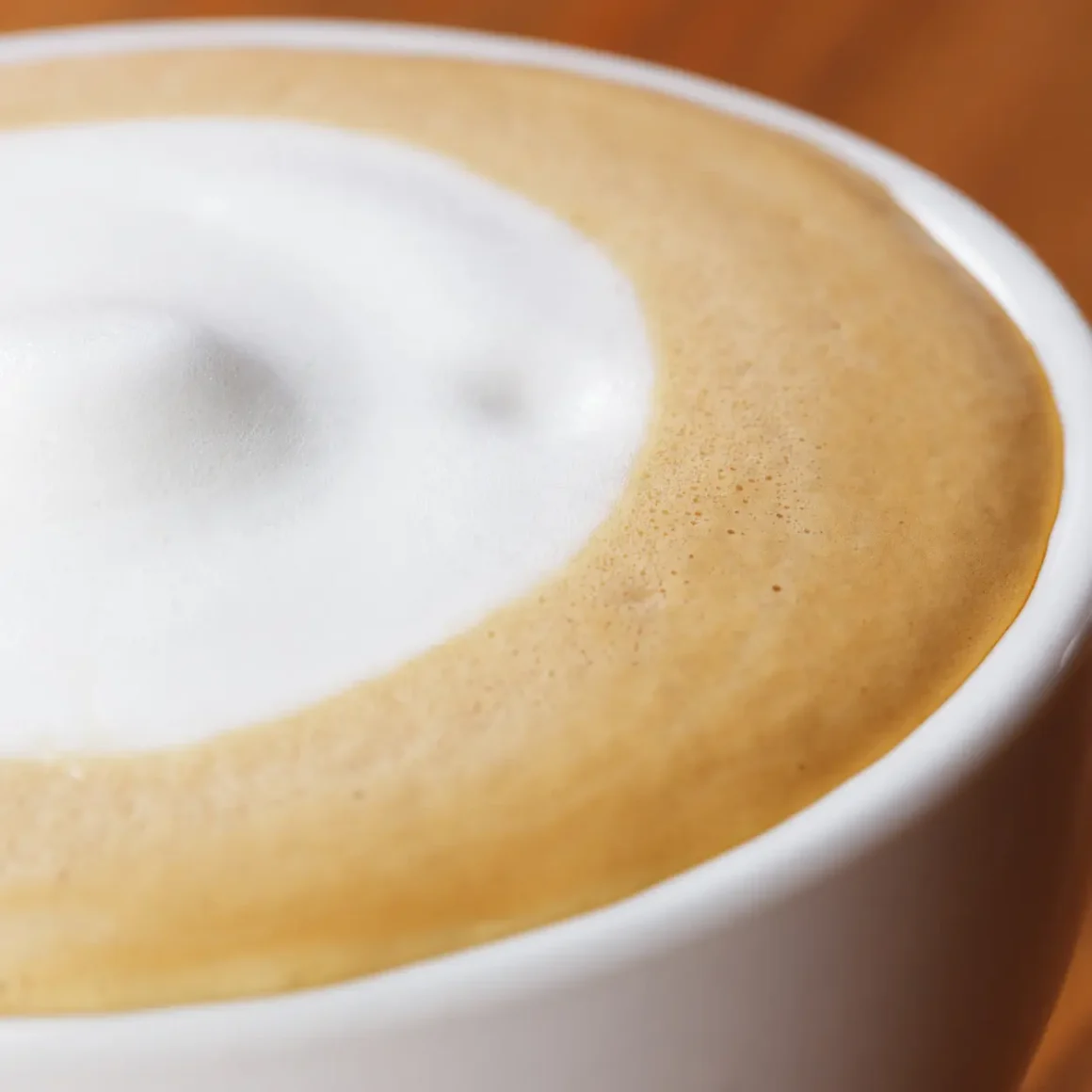
The taste and texture of this coffee drink are significantly influenced by whether it’s a wet or dry variant:
- Wet Cappuccino: Features a harmonious blend of espresso and steamed milk, leading to a smooth, creamy, and subtly sweet flavor. The steamed milk softens the espresso’s boldness, making it more palatable for those who prefer a gentler coffee experience.
- Dry Cappuccino: Dominated by the bold and intense flavor of espresso, complemented by a thick layer of foam. This variant offers a robust coffee experience, with a pronounced espresso taste and a contrasting texture between the foam and liquid.
The choice between a wet or dry cappuccino comes down to personal preference for intensity and texture – creamy and smooth versus bold and airy.
Foam: The Aesthetics and Beyond
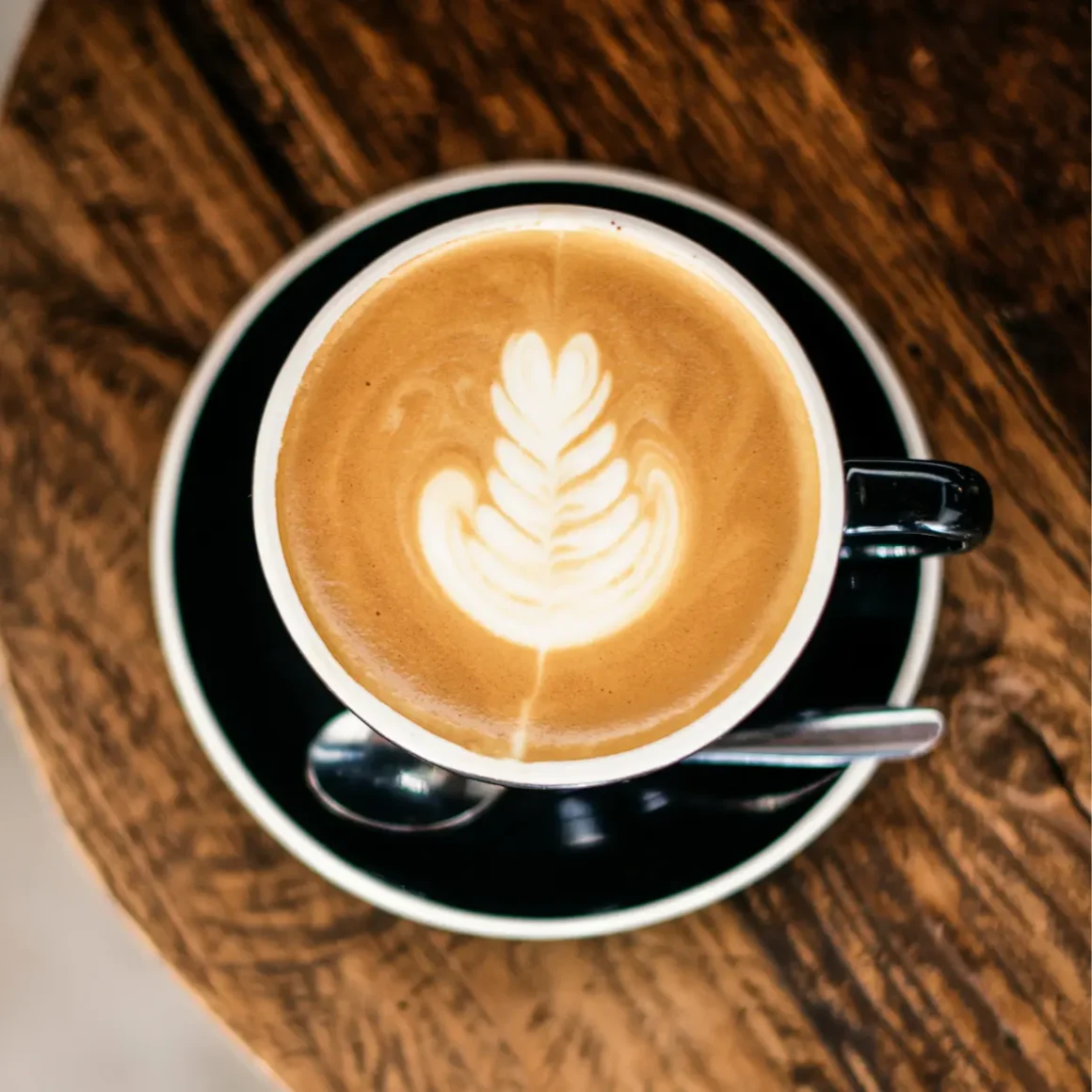
The role of foam in this delectable concoction extends beyond mere aesthetics:
- Wet Cappuccino Foam: Thinner and more integrated with the milk, adding to the drink’s overall creamy texture.
- Dry Cappuccino Foam: Much thicker, creating a distinct layer that adds an airy texture and helps maintain the temperature of the espresso.
The foam in a cappuccino not only adds visual appeal but also plays a crucial role in defining the drink’s texture and thermal properties.
Nutritional Value: Calories, Fat, and Protein
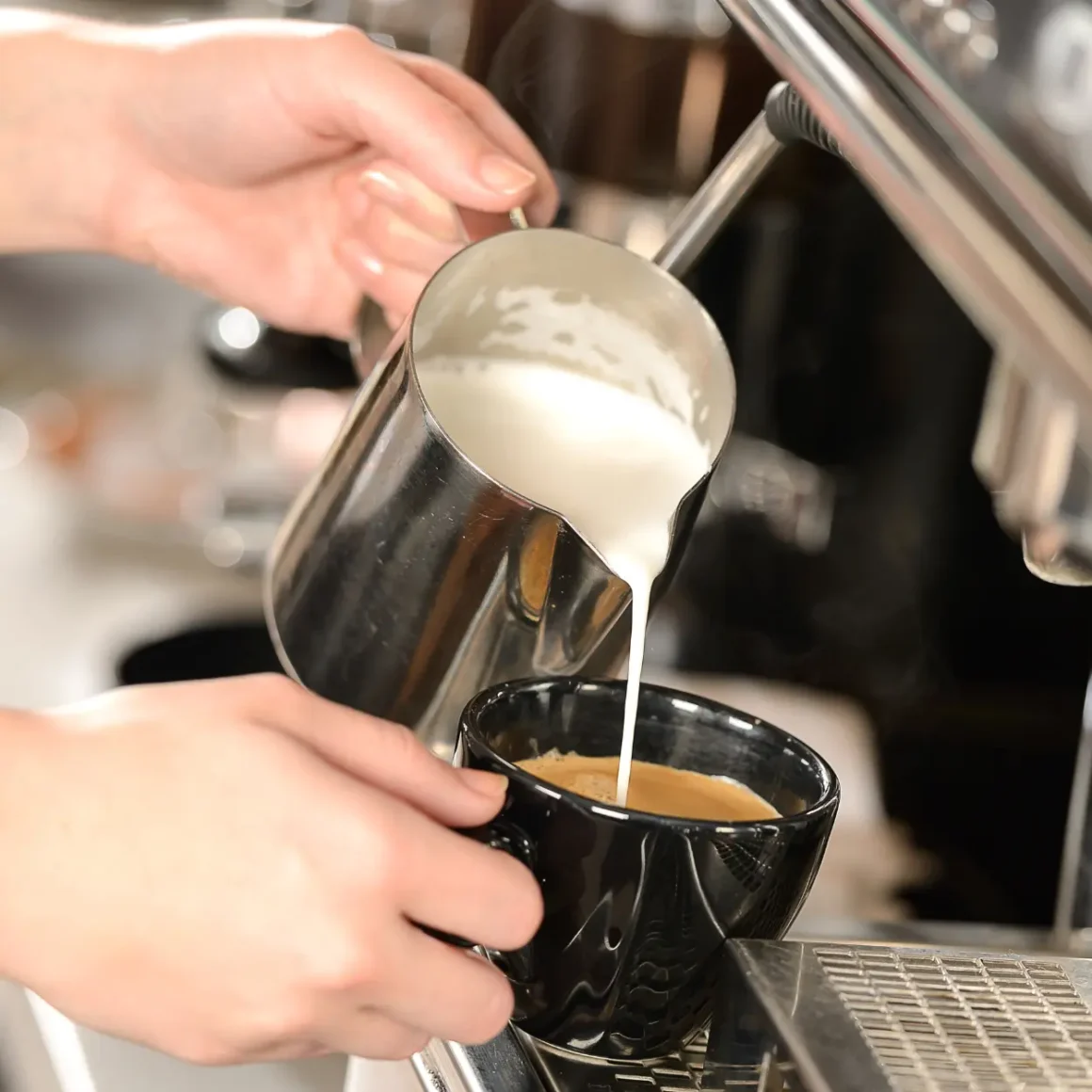
Understanding the nutritional content of these beverages can be important for health-conscious coffee lovers:
- Wet Cappuccino: Typically boasts fewer calories, approximately 45, thanks to its smaller milk foam volume compared to the dry version. The fat and protein content varies moderately depending on the milk choice.
- Dry Cappuccino: Generally features a higher calorie count, ranging from 40 to 60 calories, due to its larger milk foam volume. The nutritional composition can fluctuate based on the milk type used, with whole milk resulting in elevated levels of fat and protein.
Nutritional content varies between the wet and dry versions of this coffee drink, primarily due to the differing amounts and types of milk used in each.
Caffeine Content: Wake-Up Call or Milder Sip?
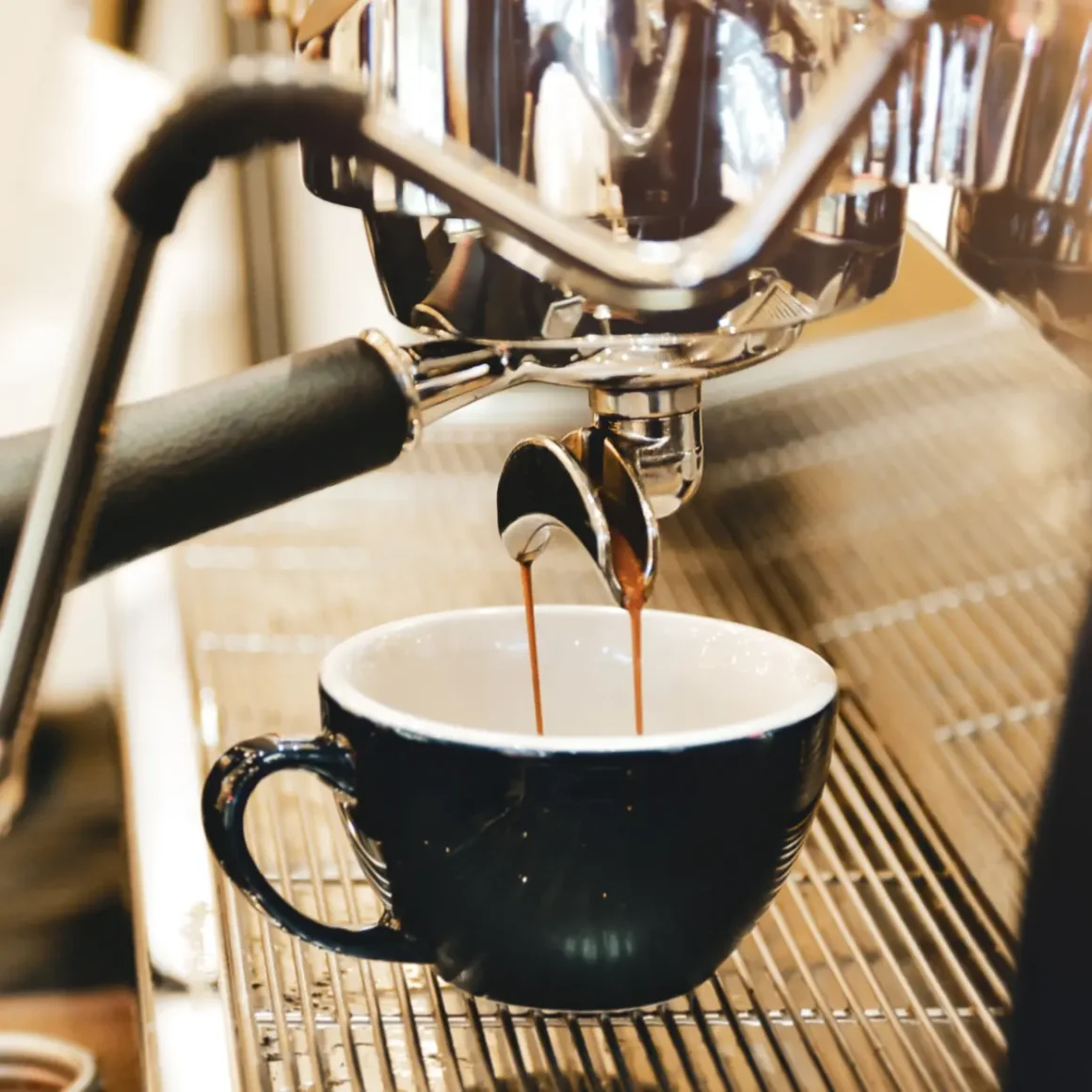
Both types of this delightful beverage contain similar levels of caffeine, but the perception of its strength can differ:
- Caffeine Levels: Whether it’s a wet or dry cappuccino, the caffeine content typically remains stable, at approximately 173mg, determined by the number of espresso shots included and the serving size. (3)
- Perceived Strength: Due to the higher milk content, wet cappuccinos may seem to have a milder caffeine kick compared to dry cappuccinos, where the espresso flavor is more pronounced.
While the actual caffeine content is similar, the perceived intensity of its effects may differ based on the cappuccino’s milk-to-espresso ratio.
The Influence of Temperature
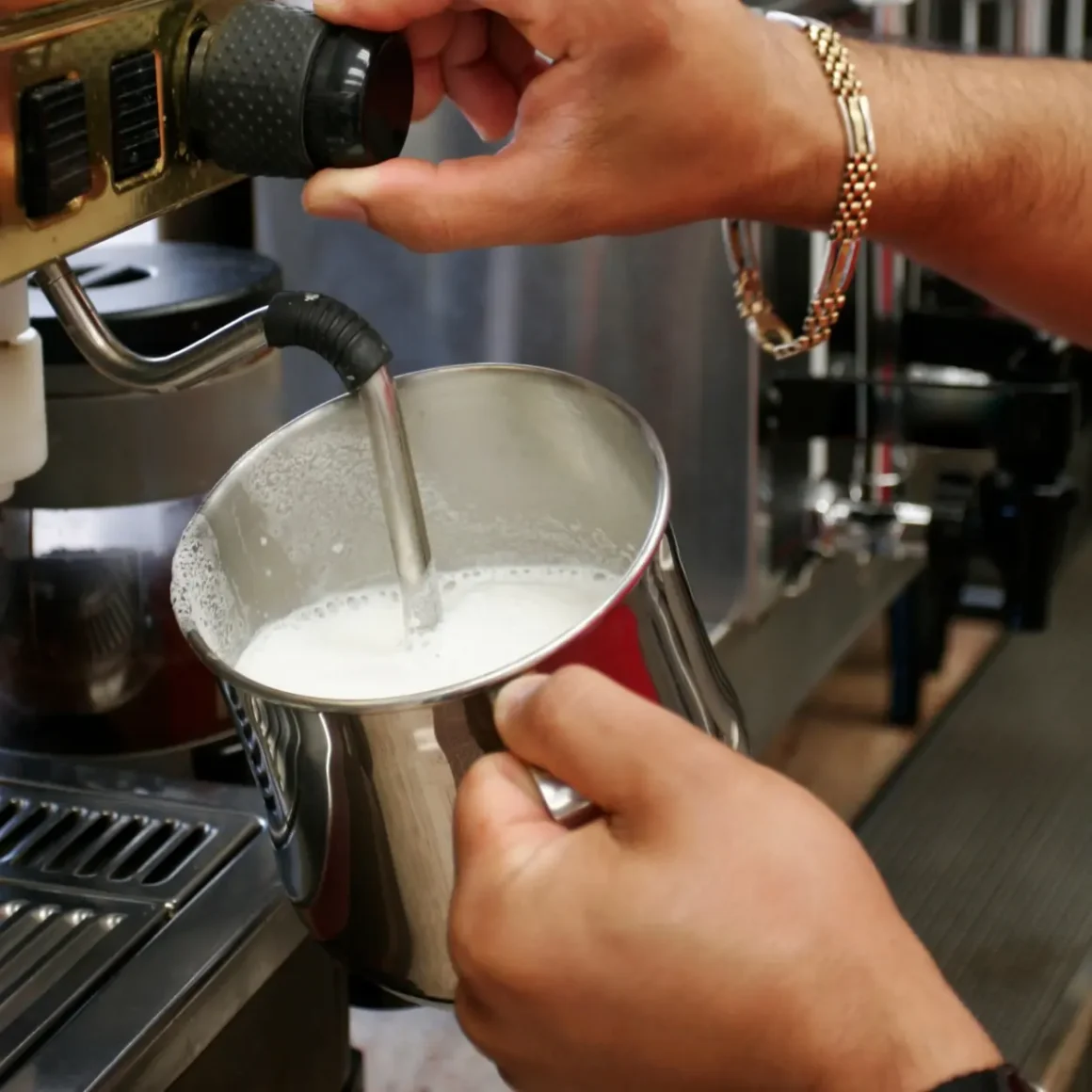
Temperature plays a key role in the overall experience of enjoying this delicacy:
- Wet Cappuccinos: The steamed milk in wet cappuccinos is usually heated to around 150°F, making it pleasantly warm but not too hot to drink immediately.
- Dry Cappuccinos: The thicker foam layer in dry cappuccinos acts as an insulator, keeping the espresso hotter for a longer duration.
The enjoyment of both beverages can be enhanced by understanding how temperature affects their flavor and texture, with each type offering a different thermal profile.
Personal Preferences and Regional Differences
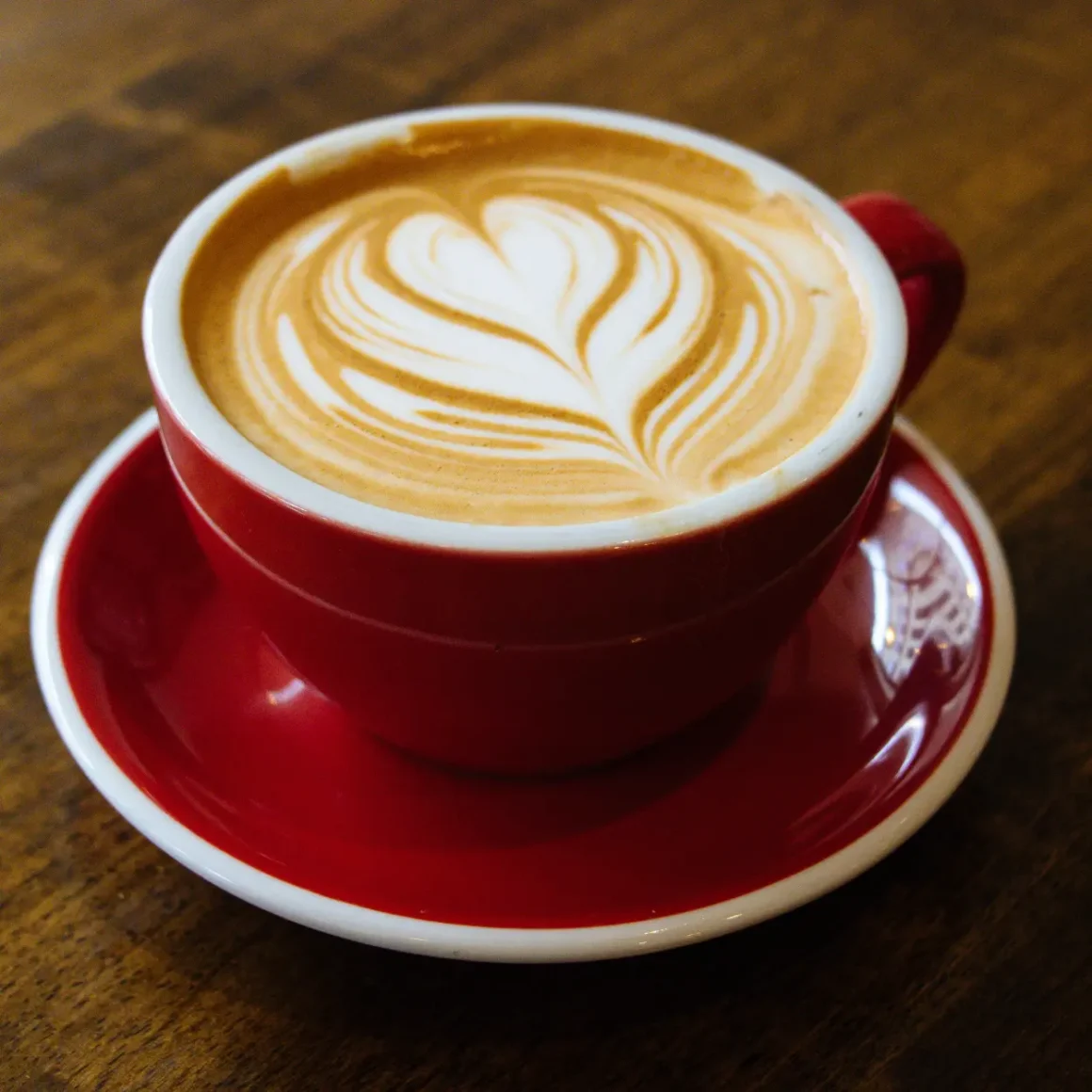
Both variations offer distinct experiences, and understanding their differences is key to making the right choice for your palate. Here are some considerations to help guide your decision:
Texture Preference:
- For those who enjoy a frothy, airy texture in their coffee, the dry cappuccino, with its greater proportion of foam, is the way to go. It’s lighter on the palate and offers a unique mouthfeel.
- Conversely, if a creamy, velvety texture is what you seek in a coffee drink, the wet version, with its higher steamed milk content, will deliver that experience.
Cultural Influences:
- It’s also interesting to consider the regional preferences that might influence your choice. In areas where strong, espresso-heavy drinks are the norm, the dry version might feel more familiar and satisfying.
- In contrast, if you’re from a region where coffee is generally milder and milkier, the wet version could align more closely with your accustomed taste.
Experimentation:
- Don’t be afraid to experiment. Trying both versions at different times or in different coffee shops can give you a better sense of your preference.
- Consider the time of day and the meal with which you are pairing your coffee. A dry cappuccino might be more appealing in the morning or after a heavy meal, while a wet cappuccino could be more enjoyable in the afternoon or with a sweet treat.
Overall, the choice between both beverages is a personal one, shaped by your flavor and texture preferences, cultural background, and even the context in which you enjoy your coffee. By understanding these nuances, you can better navigate the world of coffee and find the perfect cup that resonates with your individual taste.
The Essence of Cappuccino
Cappuccino coffee is not just a beverage; it’s a symbol of coffee culture and tradition that spans centuries. Renowned for its perfect balance of espresso, steamed milk, and foam, this concoction offers a luxurious coffee experience. Its evolution from a simple coffee and milk concoction to the sophisticated drink we know today reflects the artistry and innovation in coffee making.
The Origin Story of Cappuccino

This beverage’s history is as rich as its flavor:
- Early Beginnings: The term ‘cappuccino’ traces back to the Capuchin friars, likening the color of the coffee mixed with milk to their robes. This blend of coffee and milk has roots in the Kapuziner coffee of the 1700s.
- Italian Influence: It wasn’t until the 20th century, specifically in the post-World War I era, that the modern cappuccino began to take shape in Italian coffee houses, evolving from the earlier Kapuziner.
- Global Spread: Initially exclusive to Italy and parts of the Austro-Hungarian Empire, this delectable beverage saw global popularity post-World War II, aided by technological advancements in espresso machines.
The evolution of this coffee drink from its humble beginnings to a global coffee staple is a testament to its enduring appeal and adaptability across cultures and time.
The Classic Cappuccino Recipe

The traditional recipe for this delicacy involves a delicate balance:
- Ingredients: the classic version of this beverage consists of one-third espresso, one-third steamed milk, and one-third foamed milk.
- Espresso: The foundation of the drink, a strong and rich shot of espresso, sets the stage for the layers to follow.
- Milk: Steamed milk adds creaminess and sweetness, tempering the intensity of the espresso.
- Foam: A thick layer of milk foam gives the cappuccino its distinctive texture and helps retain the heat of the underlying layers.
Overall, the classic cappuccino, with its precise combination of espresso, steamed milk, and foam, offers a timeless and beloved coffee experience that continues to delight coffee enthusiasts worldwide.
The Trifecta: Espresso, Steamed Milk, and Foam
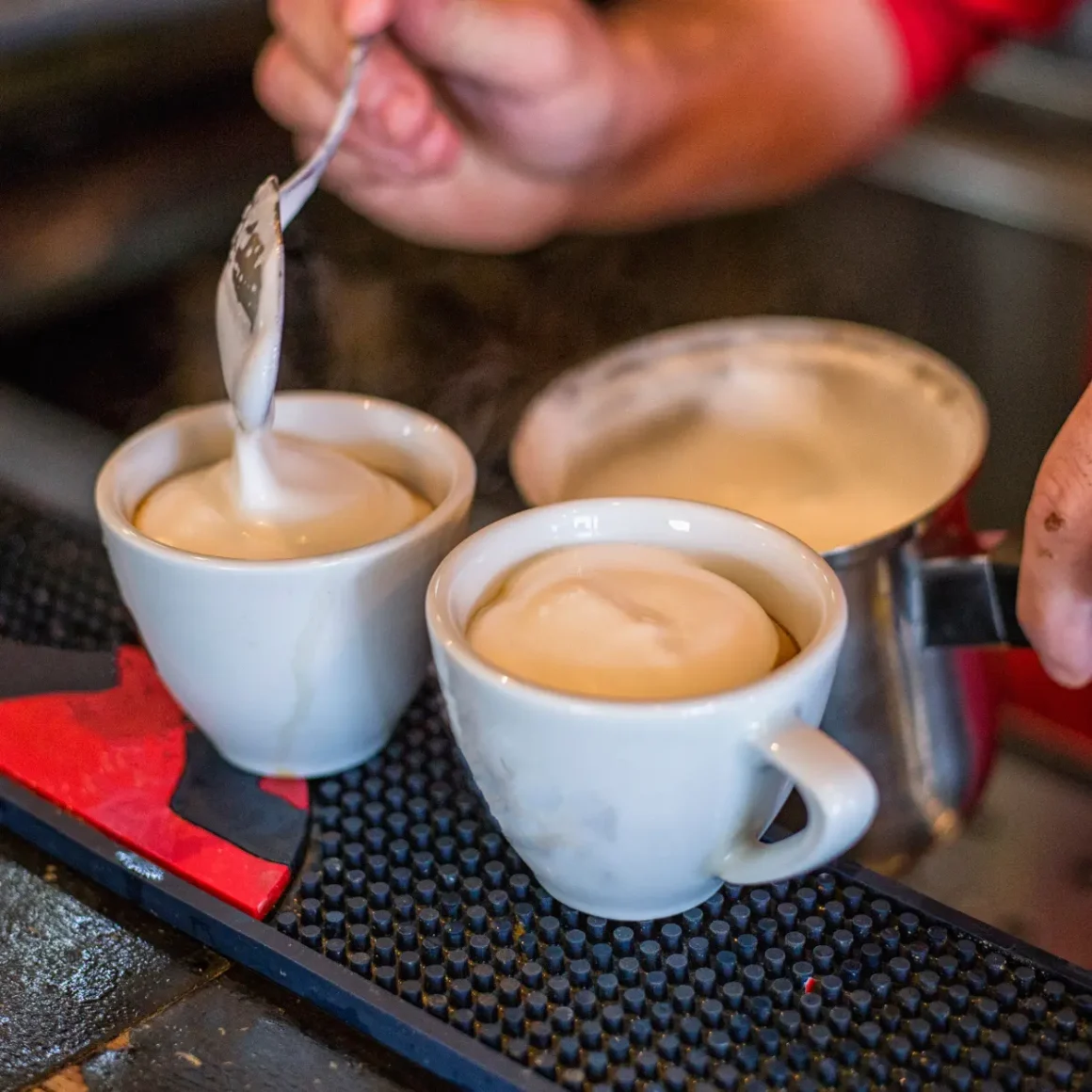
Each component of this beverage plays a crucial role:
- Espresso: The quality of the espresso is paramount. A well-brewed espresso shot should have a balance of sweetness, acidity, and bitterness.
- Steamed Milk: The steaming process is key. Properly steamed milk is velvety and smooth, not bubbly or overly aerated.
- Foam: The foam on this coffee drink is more than just a topping. It should be dense and creamy, forming a harmonious blend with the espresso when sipped.
In essence, this delectable concoction represents a timeless coffee tradition, offering a harmonious blend of bold espresso, creamy milk, and velvety foam. Its rich history and meticulous preparation reflect the art and science of coffee making, making it a favorite among coffee enthusiasts around the world.
Barista Tips and Tricks

Mastering the art of crafting the perfect cup of this lovely beverage is a skill coveted by many but perfected by few. Baristas around the world employ various techniques and secrets to elevate their coffee-making artistry. Whether you’re a novice or an experienced barista, understanding these tips and tricks can significantly improve your ability to make a cappuccino that stands out.
Expert Advice on Brewing Cappuccinos
When it comes to brewing this coffee drink, precision, and understanding of coffee are crucial:
- Quality of Beans: Start with high-quality, freshly roasted coffee beans. The choice of bean can dramatically affect the flavor of the espresso shot.
- Grind Consistency: Achieve the right grind consistency. It should be fine enough to create a well-extracted espresso but not so fine that it causes over-extraction.
- Espresso Extraction: Aim for a balanced extraction. The espresso shot should be around 25-30 seconds, yielding about 1 ounce of espresso.
- Water Temperature: Ensure the water temperature is between 195°F to 205°F for optimal extraction.
- Tamping Technique: Practice a consistent tamping technique to ensure an even extraction. The tamp should be level and firm, applying about 30 pounds of pressure.
Mastering these key aspects of brewing – from bean quality to tamping technique – is essential for creating the perfect cup of this concoction.
Milk Frothing Techniques
Frothing milk correctly is key to creating a cappuccino’s signature texture:
- Choice of Milk: Whole milk is preferred for its creaminess, but lower-fat milk or non-dairy alternatives can also be used. Each type of milk froths differently, so adjust your technique accordingly.
- Temperature: Froth the milk to about 150°F to 155°F. Overheating the milk can scald it, impacting the taste and texture.
- Creating Microfoam: Introduce enough air to create microfoam milk, but avoid creating large bubbles. The milk should have a shiny, velvety consistency.
- Incorporation: Swirl and tap the milk pitcher to break any large bubbles and mix the foam and liquid milk thoroughly.
Achieving the perfect froth and temperature for your drink’s milk is crucial for that ideal balance of texture and taste.
Common Mistakes to Avoid
Avoiding common pitfalls can greatly enhance the quality of your coffee drink:
- Over or Under-Extracting Espresso: Both can lead to a bitter or sour taste, respectively. Pay attention to extraction time and grind size.
- Uneven Tamping: An uneven tamp can cause channeling where water passes through the coffee unevenly, resulting in poor extraction.
- Incorrect Milk Temperature: Overheating the milk makes it lose its sweetness and can burn the delicate microfoam.
- Ignoring Cleaning and Maintenance: Regularly clean your espresso machine and grinder. Coffee residue and old grounds can impart unwanted flavors.
Knowing how to make a cappuccino involves more than just following a recipe. It requires attention to detail, from bean quality and grind consistency to milk frothing and machine maintenance. By mastering these techniques and avoiding common mistakes, you can elevate your coffee-making skills to a professional barista level.
Conclusion
In conclusion, the journey through the nuances of wet vs dry cappuccino has illuminated the distinctive characteristics that make each variant of cappuccino coffee unique. From the creamy, milder essence of a wet cappuccino to the bold, foam-rich profile of its dry counterpart, each offers a distinct sensory experience. Understanding the differences in taste, texture, nutritional value, and preparation techniques enriches our appreciation and allows for a more tailored coffee experience. Whether you seek the comfort of a wet cappuccino or the intensity of a dry one, the knowledge gained here empowers you to choose the beverage that best aligns with your personal preferences. Ultimately, this exploration celebrates the diversity and richness of the cappuccino, a beloved staple in the world of coffee.
FAQ
What's the difference between a cappuccino and a latte?
The main difference is in the milk-to-espresso ratio; a cappuccino has equal parts of espresso, steamed milk, and foam, while a latte has more steamed milk and a light layer of foam.
Are there regional variations in cappuccino preparation?
Yes, regional variations in cappuccino preparation exist, often influenced by local coffee culture and preferences.
How do you achieve the perfect espresso shot for a cappuccino?
To achieve the perfect espresso shot for a cappuccino, use freshly ground coffee beans, ensure a consistently fine grind, and aim for a 25-30-second extraction time.
Can you make a cappuccino without an espresso machine?
Yes, you can make a cappuccino without an espresso machine by using alternative brewing methods like a stovetop Moka pot for the espresso and manually frothing the milk.















